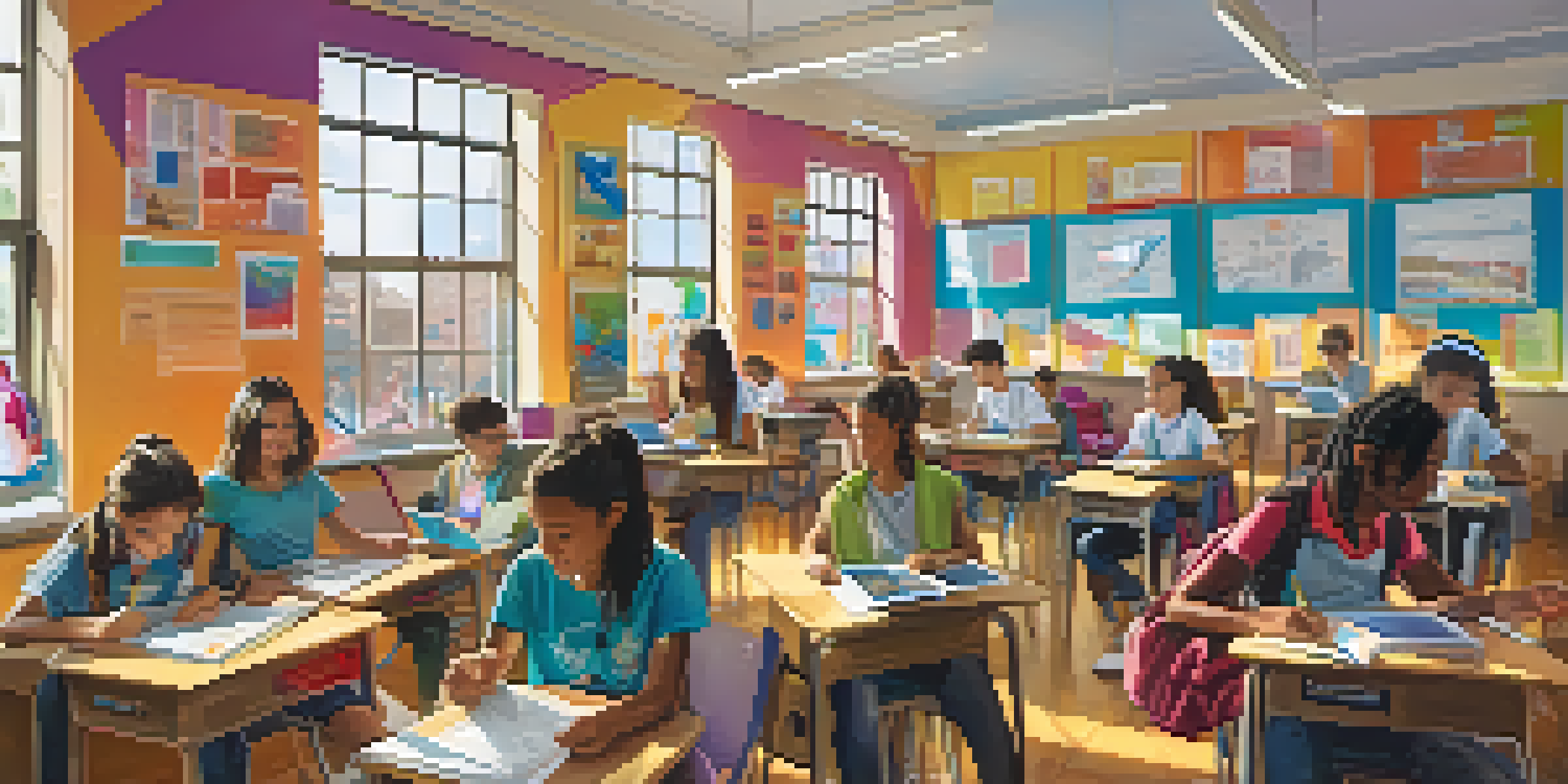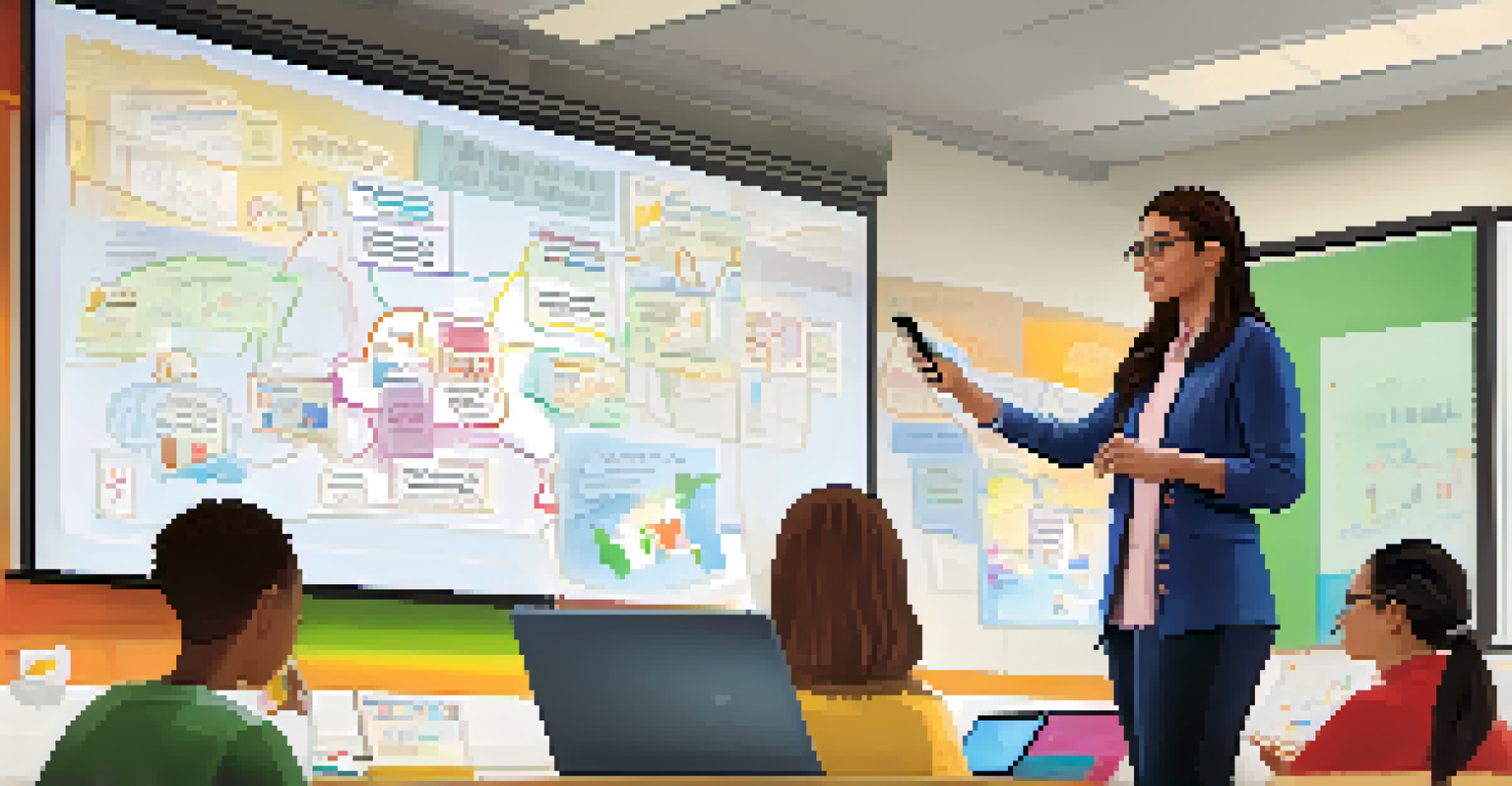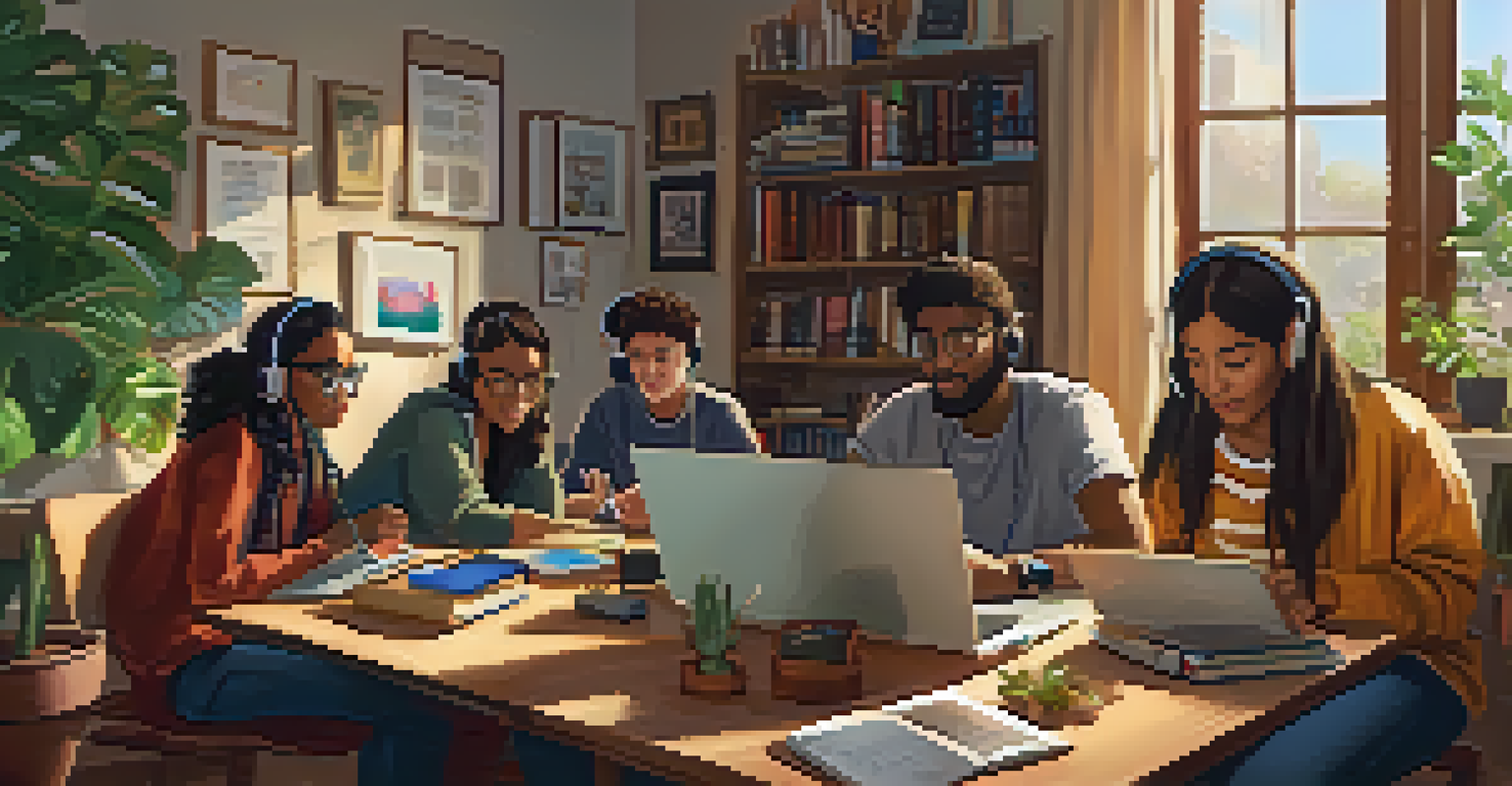The Future of Social Media in Shaping Global Educational Trends

The Growing Influence of Social Media on Education
In today's digital age, social media has become a cornerstone of communication, influencing various sectors, including education. Platforms like Facebook, Twitter, and Instagram offer educators innovative ways to engage with students and foster collaboration. The ability to share resources, insights, and experiences in real-time helps bridge the gap between traditional learning and modern educational demands.
Education is the most powerful weapon which you can use to change the world.
Moreover, social media facilitates the creation of online learning communities where students can connect globally. This interconnectedness promotes cultural exchange and diverse perspectives, enriching the educational experience. It's not just about sharing information; it's about building relationships that enhance learning.
As more educational institutions integrate social media into their curricula, we can expect a shift in teaching methodologies. This evolution encourages active participation and empowers students to take charge of their learning, making education more accessible and relatable.
Social Media as a Tool for Collaborative Learning
Collaboration has always been a key component of effective learning, and social media amplifies this aspect tremendously. Platforms like Google Classroom and Slack allow students to work on projects together, regardless of their physical locations. This kind of collaboration mimics real-world scenarios, preparing students for future teamwork in their careers.

Additionally, educators can utilize social media to facilitate peer feedback and discussions, fostering a sense of community among learners. When students share their thoughts and ideas openly, they can learn from one another and develop critical thinking skills. This collaborative environment encourages a deeper understanding of subject matter.
Social Media Enhances Learning
Social media facilitates real-time communication and collaboration, bridging the gap between traditional education and modern learning demands.
As we look to the future, we can expect social media to play an even larger role in collaborative learning. With advancements in technology and an increasing emphasis on teamwork in the workplace, harnessing these tools will be essential for developing well-rounded individuals.
The Role of Influencers in Educational Content Creation
Influencers have become a significant force in shaping opinions across various domains, including education. Educators and industry experts who share valuable insights on platforms like YouTube and TikTok can spark interest in subjects that might otherwise seem daunting. This approach makes learning more engaging, especially for younger audiences who are more likely to consume content through these channels.
The beautiful thing about learning is that no one can take it away from you.
Moreover, these influencers often break complex topics down into digestible formats, making education more accessible. For instance, a science educator on Instagram might use short videos to explain complicated concepts, allowing students to grasp ideas quickly. This method caters to diverse learning styles and encourages students to explore subjects they may not have considered before.
As influencers continue to grow in prominence, their role in education is likely to expand. By collaborating with schools and educational organizations, they can help create a more dynamic learning environment that resonates with today's students.
The Rise of Online Learning Platforms and Communities
Online learning platforms, fueled by social media, have surged in popularity, especially in recent years. Websites like Coursera, Udemy, and Khan Academy offer a plethora of courses that allow individuals to learn at their own pace. These platforms often create communities where learners can interact, share insights, and support one another, enhancing the overall learning experience.
Social media plays a crucial role in promoting these platforms, as users share their achievements and recommendations with their networks. This word-of-mouth marketing is incredibly powerful, encouraging more individuals to pursue lifelong learning. The accessibility of these resources means that education is no longer limited to traditional classrooms.
Influencers Drive Educational Engagement
Influencers on platforms like TikTok and YouTube make complex subjects more accessible and engaging for students, catering to diverse learning styles.
Looking ahead, we can anticipate even more innovative online learning experiences as technology evolves. The integration of virtual reality (VR) and augmented reality (AR) into these platforms might soon transform how we perceive and engage with educational content.
Challenges of Social Media in Educational Contexts
While social media offers numerous benefits for education, it also poses significant challenges. Issues such as misinformation, cyberbullying, and distraction can undermine the learning process. Educators must navigate these complexities to ensure that social media remains a positive tool for student engagement.
For instance, the spread of false information can lead to confusion and misunderstandings among students. It's essential for educators to teach critical media literacy skills, helping students evaluate the credibility of sources and discern fact from fiction. This preparation is crucial as students will encounter a vast array of information online throughout their lives.
Furthermore, establishing guidelines for appropriate social media use in educational settings can help mitigate distractions. By fostering a culture of responsible online behavior, schools can create a safe and conducive learning environment that maximizes the benefits of social media.
The Impact of Global Connectivity on Education
Social media has made the world a smaller place, allowing students and educators to connect across borders. This global connectivity creates opportunities for cross-cultural learning experiences that enrich education. Students can collaborate on projects with peers from different countries, gaining insights into diverse perspectives and practices.
For example, a classroom in the United States can partner with one in Kenya to work on a joint environmental project. This not only enhances their understanding of global issues but also fosters empathy and appreciation for different cultures. Such initiatives prepare students to thrive in a globalized workforce where collaboration across cultures is increasingly essential.
Global Connectivity Enriches Education
Social media enables cross-cultural collaboration, allowing students to gain insights into diverse perspectives and prepare for a globalized workforce.
As we move forward, the challenge will be to harness this connectivity effectively. Educators must find ways to integrate global perspectives into their curricula, ensuring that students are not only informed but also equipped to engage meaningfully with the world around them.
Preparing Educators for the Future of Social Media in Education
To fully leverage the potential of social media in education, it's vital to prepare educators for this evolving landscape. Professional development programs should focus on equipping teachers with the skills needed to integrate social media effectively into their teaching practices. By providing training on digital literacy and online engagement strategies, educators can enhance their teaching methods.
Additionally, fostering a culture of innovation within schools encourages educators to experiment with new tools and techniques. When teachers feel supported in their exploration of social media, they can create dynamic learning environments that resonate with students. This ongoing professional development is key to ensuring that educators remain relevant and effective in their roles.

Ultimately, as we embrace the future of social media in education, collaboration and continuous learning will be essential. By empowering educators, we can create a more enriching educational landscape that prepares students for the challenges and opportunities of tomorrow.